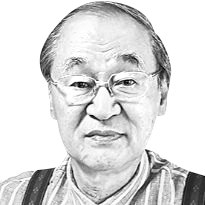[Column] A determination to depart with ‘pure bloodism’

Shin Bok-ryong
The author is former chair professor of history at Kon Kuk University.
On August 16, 1653 during the reign of King Hyojong, a Dutch merchant ship on its voyage to Japan drifted to Jeju Island. Among the 64 crewmembers aboard the ship, 28 died in the course of landing due to turbulent waters and 36, including Hendrick Hamel, survived. While the 36 survivors lived in Joseon as slaves for 14 years, eight of them first fled to Japan and finally returned home. The other eight who stayed in Namwon and Sunchoen, Jeolla could return to the Netherlands later after pleading for help to the Tokugawa shogunate in Tokyo.
If 16 of the 36 survivors did return home, what happened to the remaining 20? Some of them died early of endemic diseases, but most of them, including Jan Claetz, refused to return home and spent the rest of their lives in Joseon after marrying Korean women and having children. Information on their descendants is not available as the survivors got married with the low-class people. But certainly, their descendants lived in Korea as “Koreans” generation after generation. They must be still living as Koreans in this country.
I mentioned the story of Hamel because of a fundamental question: Does the blood only define a race? Classical nationalism singles out bloodline as a primary component of ethnicity. But today’s historical circles prioritize the simultaneity of language and residence over the bloodline. Based on the standards, people of different nationalities, who forgot their mother tongue, are not deemed the same people. Instead, people such as singer Kim In-soon, born to a Korean mother and an African American father, and TV personality Ha Il (Robert Holley), a former Mormon Church missionary and international lawyer who naturalized as Korean decades ago, can rather be seen as our compatriots, as they share the same Korean culture and language. No doubt our forefather is Dangun, the founder of Gojoseon (2,333 BC to 108 BC), but gone are the days when his descendants are only considered Korean people.
In today’s small world, concepts of the same race or ethnic group are receding fast. But the problem is a continuing reduction of Korean people. We often take pride in the fact that Korea, a country with 51.5 million people, has become one of the 10th largest economies in the world. If a country is to be recognized as a powerful one, it must meet quantitative standards — such as a population over 100 million, per capita national income over $30,000, and a land size bigger than half a million square kilometers — and strong military power epitomized by nuclear weapons, as well as cultural abilities illustrated by high literacy rate. But Korea cannot be considered a power except for the two categories — per capita national income and literacy rate. Among the five requirements, we can address one on our own: population.
But on that front, we face a demographic cliff. If our population is not to decrease, the birthrate should be over 2.1. But it stands at a paltry 0.8. In the meantime, our average life expectancy increases. According to the Book of Genesis, what God said first after creating human beings is “Be fruitful and multiply,” also warning against living alone. In some sense, humans today violate the two admonitions.
For now, we have no other choice but to accept immigrants. But the path is blocked by a high hurdle: blind adherence to the blood. That is a groundless myth which should be broken. Frequent wars in and around the Korean Peninsula brought about a countless cases of mixed blood. Some Koreans still cherish pure blood, but they are actually made up of 30 ethnic groups.
More alarming is the xenophobia the Korean people often demonstrate to people with dark skin. While demonstrating xenophilia to the white, Koreans shun others. I wonder if it is a legacy of the Japanese colonial rule. “As the Japanese people came from the southern race whose lower body is not developed well, they must improve themselves through mixing blood with the white race,” said Hiroyuki Gato, the first president of the imperial University of Tokyo. (He was assassinated by an ultra-rightist ninja).
There is only one solution. The country must accept more immigrants. Instead of taking in immigrants from Southeast Asia and elsewhere to address a critical lack of manpower for so-called 3D jobs, Korea must accept relative “intellectuals” who can absorb culture shock smoothly thanks to their understanding of the minimum level of the Korean language and alphabet — in other words, at least the level of eight graders. 2.25 million foreigners live in Korea, except for travelers. That accounts for 4.4 percent of the population. We must forget the “pure-bloodism” or a mentality to shun those with dark skin. Now that 30 percent of our students under the age of 19 are mixed blood, what are the government and people really afraid of?
Translation by the Korea JoongAng Daily staff.










with the Korea JoongAng Daily
To write comments, please log in to one of the accounts.
Standards Board Policy (0/250자)